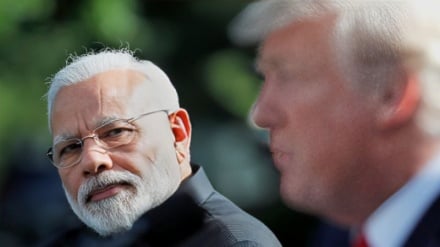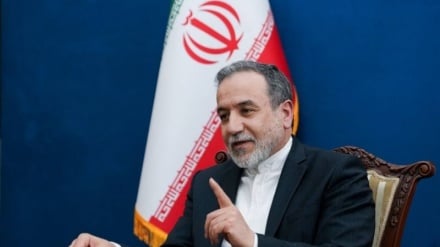Answer to a question: Why are US Bunker-busters ineffective on Yemeni resistance?
-

Answer to a question: Why are US Bunker-busters ineffective on Yemeni resistance?
Pars Today - The United States has started extensive aerial attacks against Yemen since March 15, 2025 which is considered as the most important American military operation in West Asia since Donald Trump's coming to power for the second time.
Trump, issuing the final order on 15th of March, allowed the start of these attacks which had been planned for several weeks. Therefore, different regions in Yemen have been targeted with the American fighter jets and bombers. The Americans use the fighter jets deployed on Harry Truman and Carl Vinson aircraft-carriers and B-2 strategic bombers.
The US defense department has just deployed a number of its strategic bombers, including B-2 bombers, in Diego Garcia Island (Indian Ocean) for using in the attacks on Yemen.
The US had already used B-2 bombers against Yemen during the Biden administration.
US failure
However, the American air raids have not prevented the Yemeni resistance to continue its operation against the Zionist regime. According to the American sources, over 700 sorties have been launched against the Yemeni soil till the end of April 2025. Yet, the attacks have not only failed to stop Yemen's missile attack against Israel, but Harry Truman aircraft-carrier has also sustained damage with Yemeni missiles and lost two F-18 Super Hornet fighter jets. Thus, this fleet, scared of the anti-warship arsenal of Yemen's army, has been deployed 1000km away from the coasts of the country.
The point to note is that the US has employed its strongest aerial deterrence factor against Yemen, namely, GBU-57 MOP (which is the strongest bunker buster of the US), but in no avail just as it has failed to stop the Yemenis from interception of sips in the sea.
GBU-57 MOP is a 40,000 lb (14-ton) bomb with a warhead weighing 5000 lb (around 2.5 ton). B-2 Spirit and B-52 H can carry only two of these bombs. This bomb can penetrate 61m deep into 5000 PSI reinforced concrete or 8m deep into 10,000 PSI ultra-super concrete. The bomb is dropped from high altitude while the aircraft is diving to give it the acceleration needed for deep penetration into reinforced concrete.
According to Pentagon's claim, this bomb has been designed for destroying a set of sophisticated and very hardened targets which are buried deep underground, and it can destroy concrete bunkers and military facilities deployed in deep tunnels. This munition has a delay fuse which explodes after the penetration of the warhead.
MOP is the most dangerous conventional munition against underground and protected facilities. This bomb is large and its radar area is big (6.2m long and 70cm diameter).
However, this bomb has not been successful against the Yemeni underground targets as they have quickly reconstructed the entrances and exits of the struck tunnels. Moreover, this munition has failed to meet the expected effects, possibly, because of the special location of the tunnels which the Yemenis have dug during the recent years and hidden their equipment in. Wall Street Journal, reported in this regard that the US Stealth B-2 bombers have failed to destroy an underground city of the Ansarullah of Yemen with bunker busters. The American newspaper, referring to the satellite images, added that construction of new entrances in the targeted place indicates that the attack was unsuccessful to destroy the underground complex.
A senior military source of Yemen, pointing to the American attacks against his country with B-2 bombers, said that these attacks are ineffective and reveal the US' fear. He said to Al-Mayadeen, "Employment of B-2 bombers against Yemen shows the US' fear of downing its fighter jets over Yemen and the surprising air defense of the country." He made it clear, "The recent attack has not hit the weapons depot and has failed to affect the arms capability of Yemen. These attacks are being launched after the fatal blow which the American enemy has received in the Red Sea when its trade ships had been targeted with Yemeni drones and missiles."
Conclusion
The Yemeni resistance, especially Ansarullah Movement, relying on the firm will and belief of the people and its allies, is resisting. Using bunker busters and other sophisticated weapons by the US has failed to weaken the Yemeni people's spirit of resistance and steadfastness. This shows the defeat of the American military strategies in the region and superiority of the defense and security strategies based on resistance."
Using B-2 bombers and BU-57 bunker busters, the Americans have employed the state-of-the-art weapons they had against Yemenis and boisterously propagated about it, but didn't get the result they desired.
The Americans had ignored a very important factor in military operations in Yemen, i.e. professional forces of Yemeni army and Ansarullah and their experience of long war with the Saudi coalition. Thus, through false depiction of the Western media, the Americans thought that they would face a bunch of primitive people with no skill or professional military makeup; whereas, the results of the US' military operation in Yemen has imposed over $800 million on Washington as Yemenis have shot down 27 sophisticated MQ-9 "Reaper" drones. This proves that the Yemeni combatants are brave enough in the asymmetric war against the US and they enjoy the knowhow, skills and military equipment to deal effective and painful blows to the American enemy and their Zionist allies.
RM/MG


